Your Ultimate Guide to Identifying Authentic Tahitian Pearls

The Tahitian pearl is a cultured saltwater pearl recognized for its peculiar and exquisite look. Due to their dark, sometimes blackish appearance, we commonly refer to these pearls as "black pearls." The black-lipped oyster, Pinctada margaritifera, indigenous to the atolls and waters of French Polynesia, including Tahiti, produces Tahitian pearls.
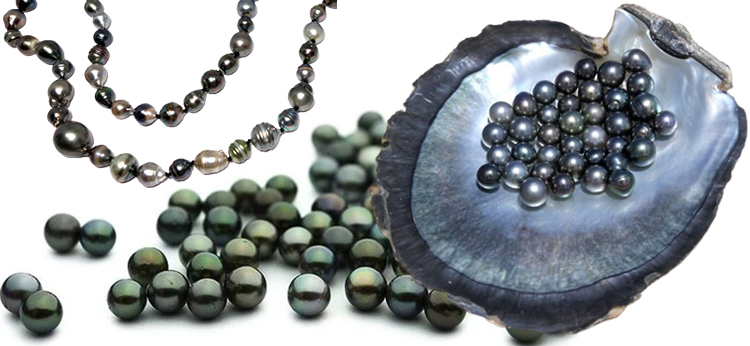
Tahitian pearls came into existence when the French pearl farmer Jean-Claude Brouillet began experimenting with pearl culture in the seas of Tahiti in the 1960s. The production of these pearls started, and he learned that these black-lipped oysters made pearls of excellent quality in various hues, such as blue, purple, green, gray, and black. As a result, these pearls immediately appeal to buyers and jewelers and are now among the most expensive and sought-after pearls worldwide.
However, due to many fakes, it's important to identify real Tahitian pearls, as buying a fake Tahitian pearl might result in financial loss and dissatisfaction. Furthermore, it is essential to identify genuine and imitation Tahitian pearls to preserve the reputation of the jewelry sector and avoid fraud.
Generally, recognizing authentic Tahitian pearls is vital for customers and the jewelry business. Buyers may make knowledgeable judgments and ensure they spend their money on high-quality, authentic pearls by knowing how to tell real from fakes.
What Are Tahitian Pearls?
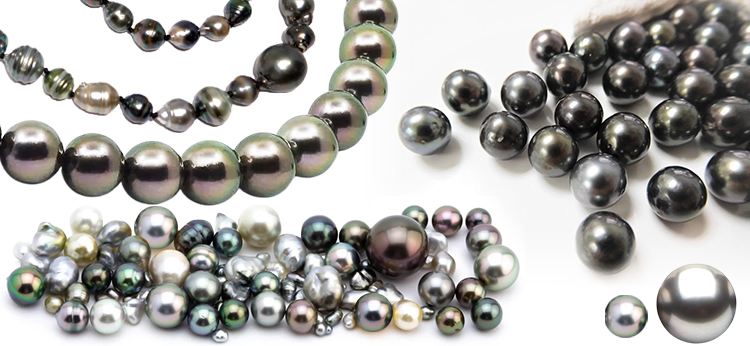
Tahitian pearls are a preferred selection for high-end jewelry owing to their exclusivity and elegance. Some of the peculiar features of a Tahitian pearl include the following;
Size, Shape, and Color of Tahitian Pearls
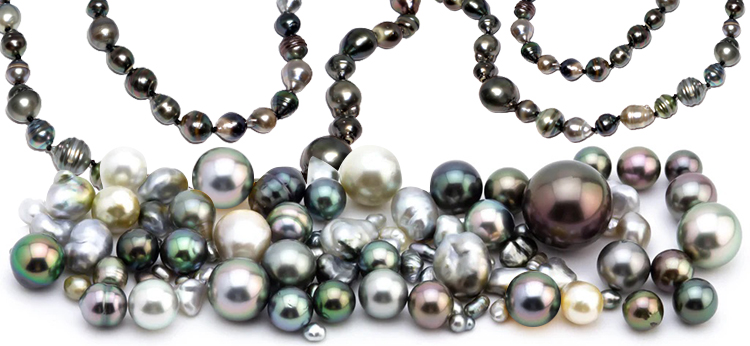
Tahitian pearls differ in terms of shape, size, and color; however, they're most famous for their great size and distinctive black hue. They vary in size from 8mm to 18mm, with the most popular sizes being between 9mm and 14mm.
Tahitian pearls are available in various forms, notably semi-round, oval, teardrop, round, and baroque. Often, Baroque pearls, highly regarded for their individuality, usually have an uneven shape. Furthermore, these pearls are noted for their remarkable and eye-catching color, which vary from black to dark gray with purple, green, and blue overtones.
Surface Quality and Luster
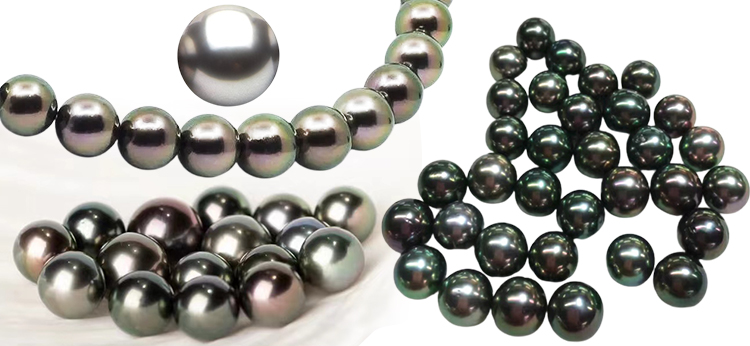
A Tahitian pearl's luster and surface quality can significantly impact its entire value and appeal. Furthermore, Tahitian pearls have a variety of surface qualities, ranging from perfectly smooth and blemish-free to severely etched with pits, lumps, and ridges.
Notably, Tahitian pearls of the greatest grade have a flawless, blemish-free appearance, while lower-grade pearls may have noticeable defects or abnormalities.
A Tahitian pearl's luster refers to its brightness and reflecting appearance. The sheen of Tahitian pearls can vary from smooth and silky to dazzling and high-gloss.
Furthermore, Tahitian pearls of high grade have a brilliant, reflecting shine that enhances their inherent color and attractiveness.
Weight and Density

Tahitian pearls can range in weight and density depending on their dimensions, shape, and general condition. Due to its thicker layers of nacre surrounding the implanted nucleus, Tahitian pearls are usually heavier than freshwater pearls.
For bigger, higher-quality pearls, the weight of a Tahitian pearl varies from as low as 1 carat up to as much as 20 carats or even more. Furthermore, since more nacre layers grow around the nucleus, Tahitian pearls have a little greater density than freshwater pearls at about 2.7 g/cm3.
Additionally, a Tahitian pearl's overall worth and quality might vary depending on its weight and density. Pearls with higher densities and larger sizes are particularly desirable and uncommon.
How to Evaluate the Quality of a Tahitian Pearl
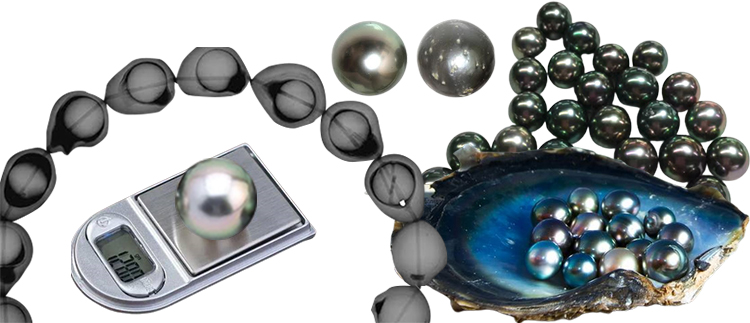
The quality of Tahitian pearls results from the collaboration of certain elements, with high-quality pearls having brilliant color, surface quality, and luster. Nonetheless, there are some techniques for determining the authenticity of a Tahitian pearl while assessing its quality.
Surface Quality Test

The most basic way to conduct a surface quality test is to use the naked sight to look at the pearl's surface. Usually, a Tahitian pearl of superior grade would have a spotless, smooth surface.
So, on the pearl's surface, check for flaws like lumps, pits, fissures, or discolorations. Furthermore, you may run your fingertips over the pearl's surface to feel for any rough or uneven surfaces.
Magnification Test
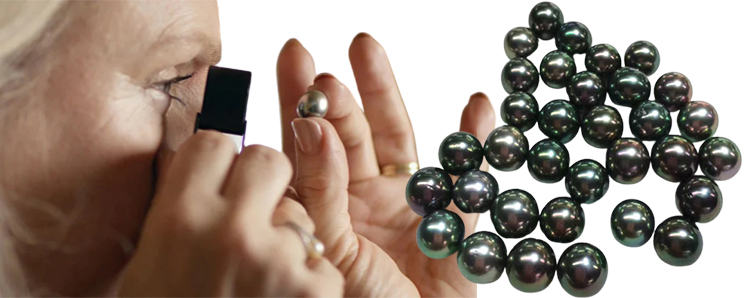
The magnification test involves attentively examining a Tahitian pearl's surface with a jeweler's loupe or a microscope to check the quality of its surface. To view the pearl's surface properly, it is ideal to do this technique in a well-lit environment.
You can use a jeweler's loupe, a compact, hand-held magnification device that's easy to hold up to the eye to examine the surface of the pearl. Furthermore, to see the pearl's surface up close, you may employ a microscope with a magnifying lens.
Weight Test
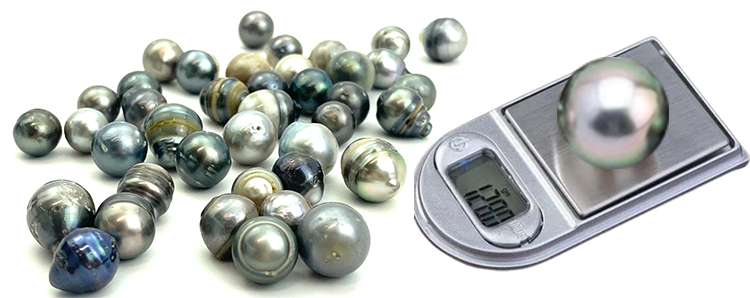
The weight test is perfect for assessing a Tahitian pearl's density and weight, as they may measure its quality. Tahitian pearls should be consistently dense and heavy throughout.
However, a difference in this pearl's weight may indicate a processed or lesser-quality Tahitian pearl. To determine the pearl's grams weight, use a jeweler's scale. Depending on their size, Tahitian pearls can weigh anything from 0.5 grams to over 20 grams.
X-ray Test
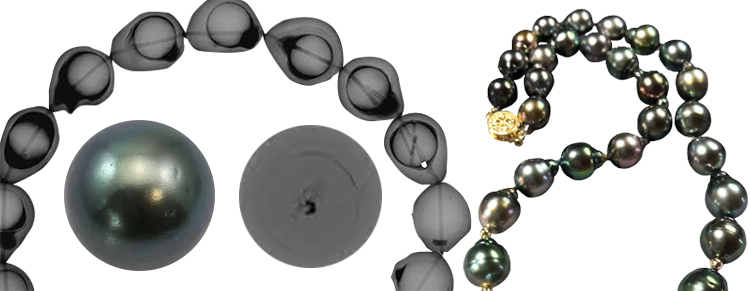
X-ray test is a typical technique for determining whether Tahitian pearls are genuine or cultivated. Natural pearls have a distinct inner structure that develops haphazardly over time, leading to an irregular dispersion of calcium carbonate crystals. On the contrary, cultured pearls exhibit a relatively consistent structure due to their development in controlled environments.
Natural pearls will show up as a series of dark, concentric rings in the X-ray picture, but cultivated pearls will display a more consistent pattern. Furthermore, the X-ray test, routinely employed by jewelers in the pearl business, certifies a Tahitian pearl's authenticity and is exceptionally trustworthy.
Pearls' Origin

A Tahitian pearl's origin can play a significant role in establishing its genuineness. This method enables specialists to confirm that it was generated in the precise area and by the right oyster species.
Moreso, this process is crucial since Tahitian pearls are in high demand due to their distinctive and alluring qualities, which include their enormous size, deep hues, and glossy surface. Several techniques, which include isotope analysis, DNA testing, visual inspection, and XRF analysis, can be used to identify the provenance of a Tahitian pearl.
Common Misconceptions About Tahitian Pearls

Some widespread misconceptions regarding Tahitian pearls may cause ambiguities or uncertainty. Here are a few common misconceptions observed:
Believing That All Black Pearls Are Tahitian Pearls

It's easy to identify the Tahitian pearls due to their deep hues. However, not all black pearls come from the black-lipped oyster (Pinctada margaritifera).
In various parts of the world, several distinct species of oysters create other varieties of black pearls. For instance, the Black Akoya pearls are black pearls made by the Japanese Akoya oyster (Pinctada fucata).
Thinking That Tahitian Pearls Are Dyed or Treated
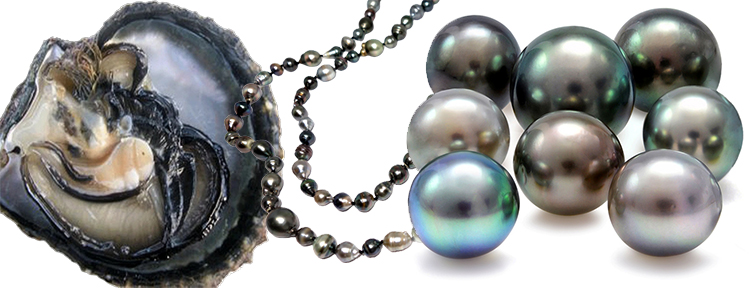
Tahitian pearls are inherently black, so they don't need to be dyed or given any other treatments to make them more vibrant. Black-lipped oysters, which are native to Tahiti, naturally produce pearls in a variety of dark hues, including green, black, blue, gray, and purple.
The water temperature, oyster's food consumption, and environmental minerals are only a few of the variables that affect a Tahitian pearl's color. In conclusion, Tahitian pearls are naturally black and need not be treated or dyed to make them more spectacular. Furthermore, Tahitian pearls lose substantial value and authenticity when treated or enhanced.
Assuming That Tahitian Pearls Are All the Same Size and Shape
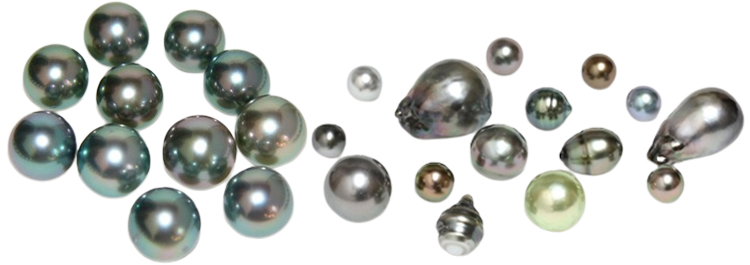
The sizes and forms of Tahitian pearls are as varied as those of other varieties of pearls. Tahitian pearls can be as tiny as 8 mm or as huge as 20 mm or even more.
Similar to other types of pearls, Tahitian pearls can have a wide range of shapes based on several variables, such as the form of the nucleus or irritant, the pearl's natural sculpting by the oyster as it develops, and the location of the pearl within the oyster's shell. Some of its peculiar shapes include drop, round, oval, semi-round, baroque, and circular forms among the available Tahitian pearls.
Identifying Fake Tahitian Pearls

There are several ways to identify fake Tahitian pearls. To properly figure out how to identify the fakes, you need to know the following:
Common Methods Used to Create Fake Tahitian Pearls
Some of the standard methods used in creating fake Tahitian pearls include:
Glass Beads
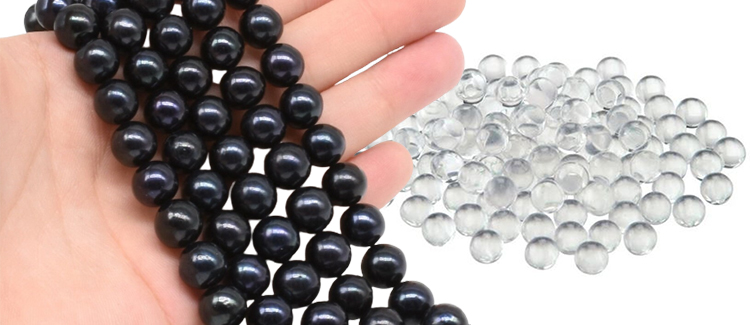
Jewelers could use glass beads to imitate real pearls by attaching layers of nacre or similar coatings on the surface.
Composite Pearls
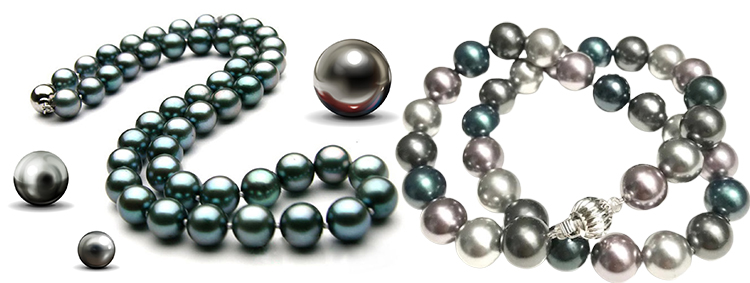
Little fragments of nacre combined with synthetic or natural materials form composite pearls with a surface resembling pearls.
Plastic Beads

To replicate the look of a pearl, jewelers may paint or coat plastic beads with iridescent material.
Shell Beads
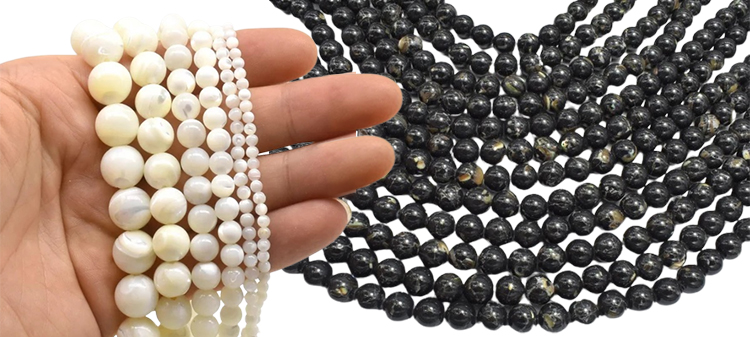
It is possible to shape and cover beads obtained from seashells, including mother-of-pearl or abalone, to resemble Tahitian pearls.
Treated or Dyed Pearls

Jewelers may polish or color natural pearls or other kinds of pearls, causing them to resemble Tahitian pearls.
Differences Between Real and Fake Tahitian Pearls
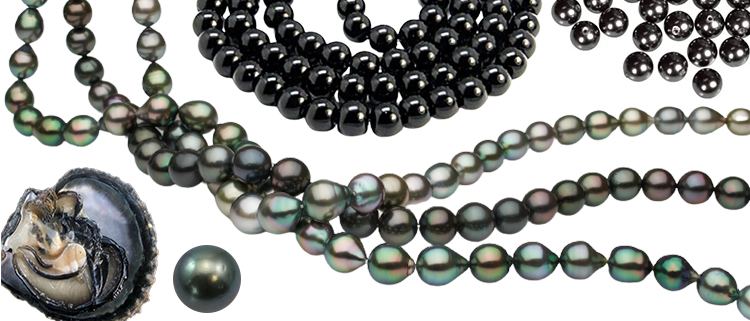
You can distinguish between genuine and imitation Tahitian pearls by looking at a few of the distinctions between the two:
Weight
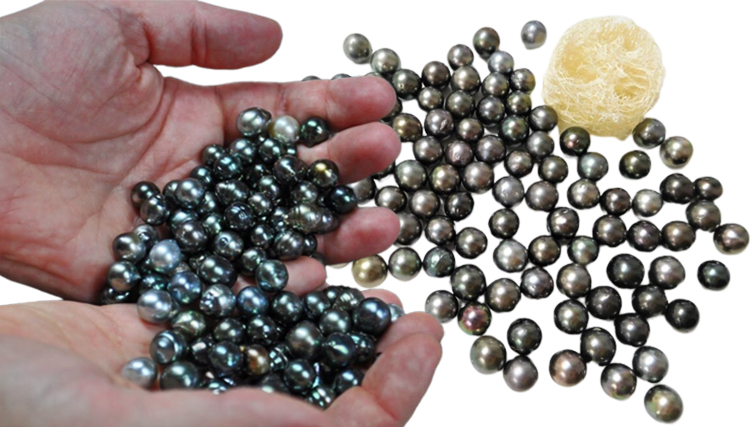
While imitation pearls may seem unrealistically light, genuine Tahitian pearls are somewhat dense for their size.
Price
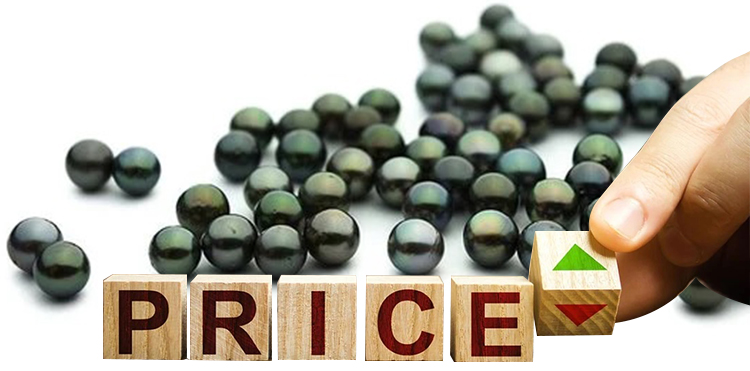
Genuine Tahitian pearls are extremely rare and might cost a lot of money; however, imitation pearls could be considerably less expensive.
Color

While imitation pearls could have an artificial or uniform hue, real Tahitian pearls come in a broad spectrum of natural shades, notably green, black, blue, gray, and purple.
Drilling
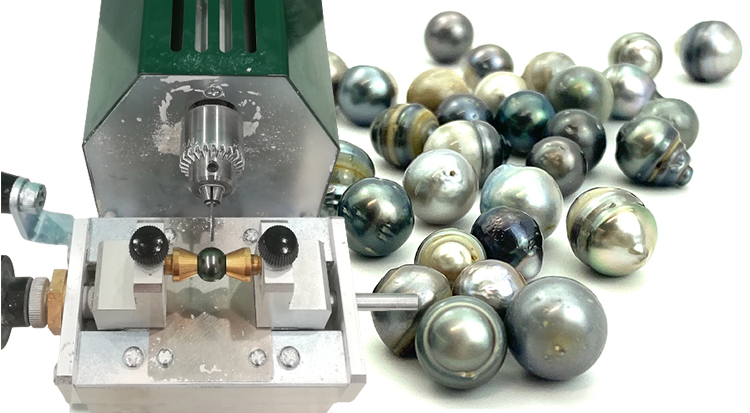
In contrast to imitation pearls drilled from their sides or bottom, jewelers drill genuine Tahitian pearls from the top.
Luster
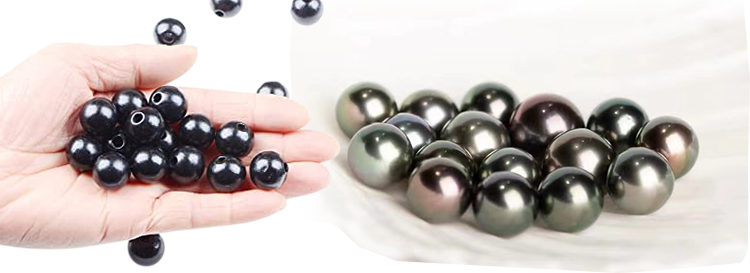
Imitation pearls may seem flat or drab, whereas genuine Tahitian pearls have a profound, rich sheen that reflects light in various colors.
Surface Quality
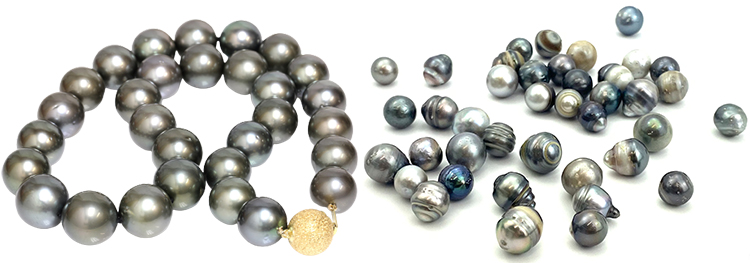
While imitation pearls might possess a smoother, more uniform surface, genuine Tahitian pearls have a distinctive surface texture with tiny ridges and bumps.
Pricing and Value of Tahitian Pearls

Tahitian pearls, prized for their distinctive and exotic aesthetic, have a value that differs greatly based on several criteria.
Factors Determining the Value of Tahitian Pearls
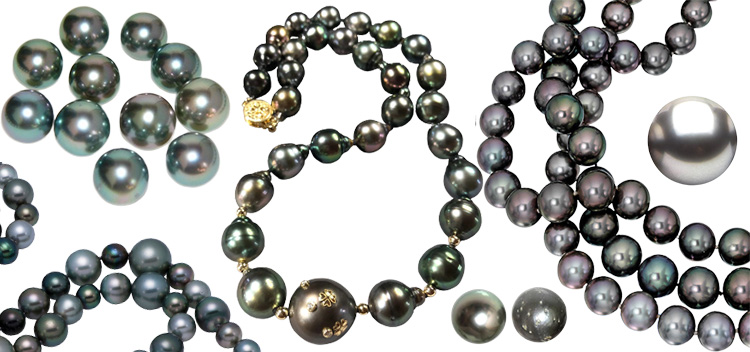
There are several factors that determine the value of Tahitian pearls. Notable mention includes size, shape, color, surface quality, luster, and nacre thickness. All things considered, a blend of these elements determines the price of a Tahitian pearl.
An excellent Tahitian pearl with outstanding size, luster, color, shape, surface quality, and nacre thickness may be relatively expensive.
Comparison of Tahitian Pearls With Other Types of Pearls
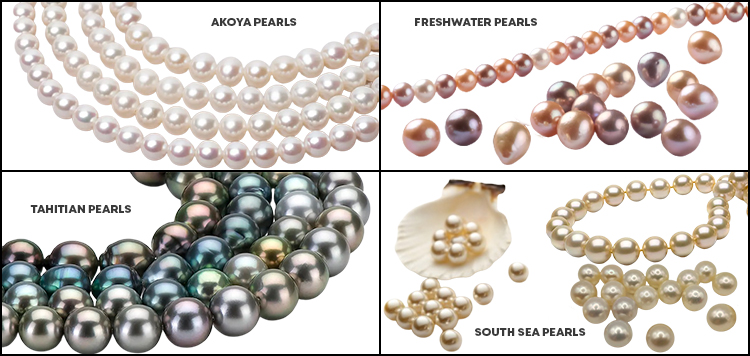
Tahitian pearls stand out from other varieties of pearls because of their particular characteristics.
●Most of the time, Akoya pearls are smaller than Tahitian pearls and are often white or cream. Moreover, they are usually less costly than Tahitian pearls.
●Generally, freshwater pearls are less costly than Tahitian pearls and come in a larger variety of hues, such as peach, lavender, pink, and white. Freshwater pearls, however, often have a poorer luster and are smaller than Tahitian pearls.
●A Tahitian pearl is a form of cultured pearl, meaning it developed within an oyster or a mussel. Nevertheless, they differ from other cultured pearls due to their distinctive color variety.
●Most South Sea pearls are cream-colored, white, or golden in hue and are often more significant than Tahitian pearls. However, because of their large size and exclusivity, South Sea pearls are frequently more costly than Tahitian pearls.
Price Range of Tahitian Pearls
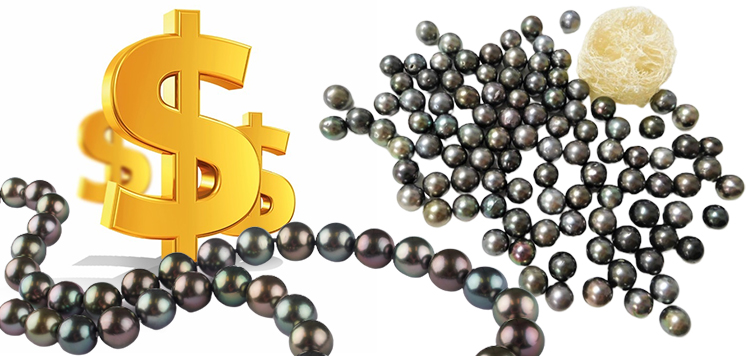
Tahitian pearls vary in price according to shape, color, size, luster, nacre thickness, and surface quality. Larger pearls with superior quality and distinctive hues typically fetch more incredible prices.
Tahitian pearl prices can range from $200 to $20,000 or more for a strand, based on the quality and features of the pearls. Furthermore, you can buy and sell Tahitian pearls individually, with varying costs from $50 to a few thousand dollars.
Frequently Asked Questions About Tahitian Pearls
A. How to Care For Tahitian Pearls?
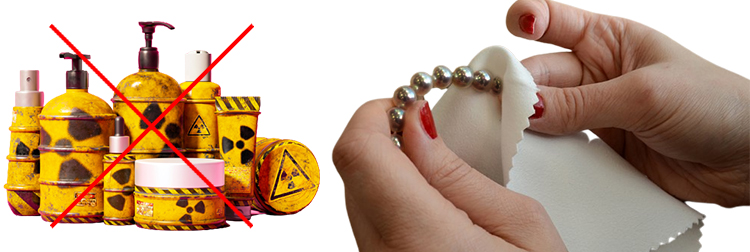
Exposure to the chemicals in cosmetics, hair products, fragrances, and home cleaners can degrade Tahitian pearls. Therefore, avoid wearing your pearls while applying these products.
Furthermore, use a gentle, wet cloth or a cleaning solution made especially for pearls to clean your Tahitian pearls. It's important to avoid using harsh cleaning agents or scrubbing your pearls since doing so might harm the nacre.
B. Can Tahitian Pearls Be Restringed?
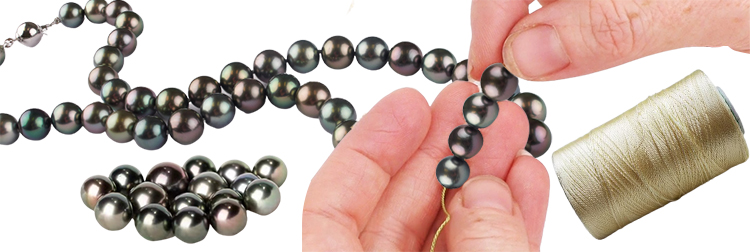
Yes, this procedure is possible. The silk thread intended to string the pearls can expand or deteriorate with time, increasing the likelihood that the pearls will come untied from the strand or that the thread will snap entirely. To avoid this, you must restring your Tahitian pearl jewelry at least every one to two years.
C. Are Tahitian Pearls More Valuable Than Other Pearls?
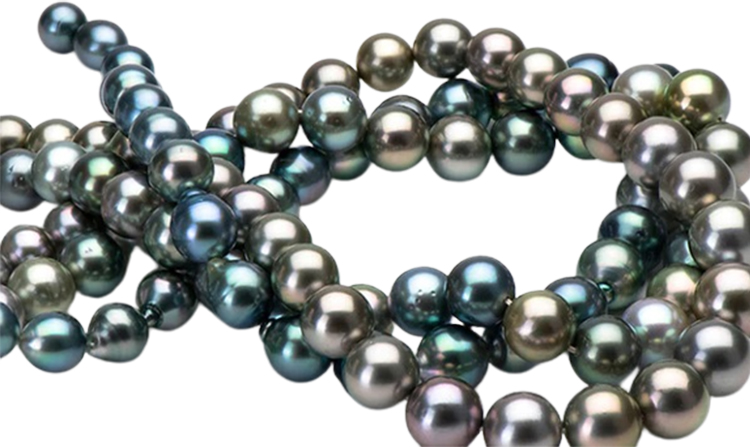
The final determinant of a Tahitian pearl's value is its unique qualities and the market's demand at the moment of sale. Yet generally speaking, we regard the Tahitian pearls as among the most sought-after and expensive varieties of pearls in the market.
D. What Is the Difference Between Tahitian Pearls and Other Black Pearls?
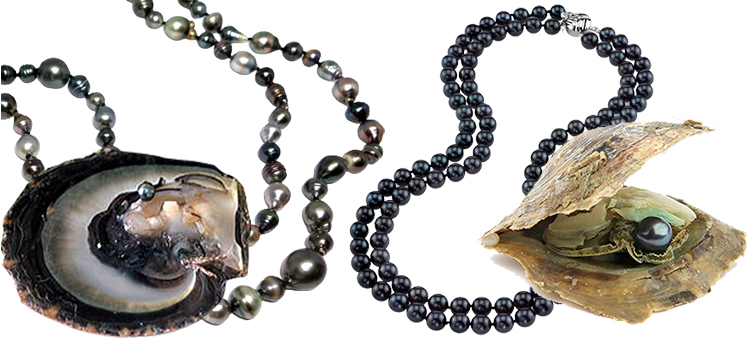
Tahitian pearls' place of origin is the key distinction between them and other black pearls. Other black pearls may be discovered worldwide, such as in the Sea of Cortez, the Philippines, and the Cook Islands, but you can only find Tahitian pearls in the seas of French Polynesia.
E. How Can I Authenticate a Tahitian Pearl?
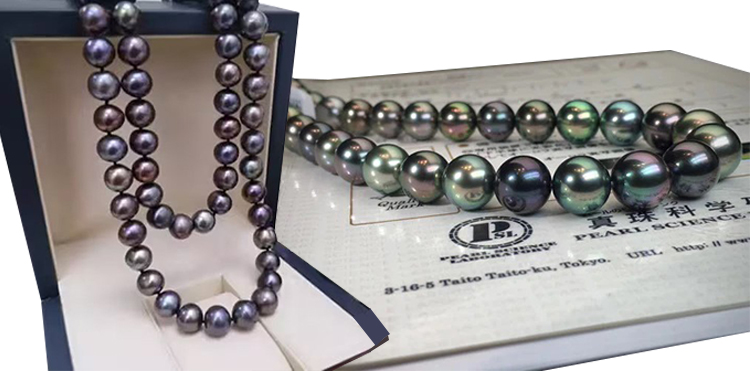
There are several ways to authenticate a Tahitian pearl. First, look for its peculiar features, like its luster, size, and color. Furthermore, buying from a trustworthy pearl expert is crucial to ensure you obtain a genuine Tahitian pearl.
Choose a vendor that can offer an authenticity certificate that attests to the pearl's provenance and caliber.
Where to Buy Tahitian Pearls
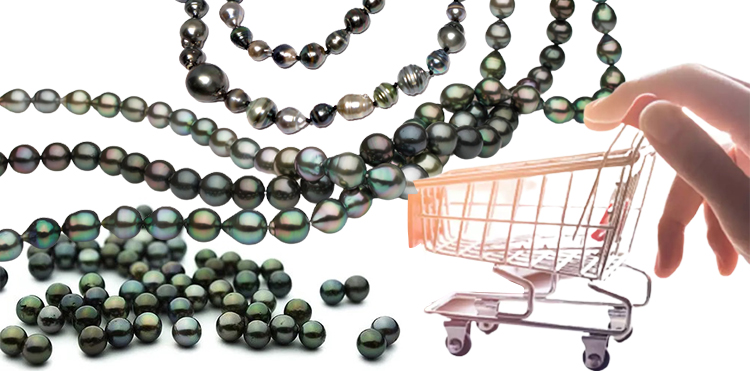
Acquiring Tahitian pearls from a recognized pearl specialist who can offer proof of authenticity before making your purchase is crucial.
They should state the details of the pearl's shape, size, color, surface quality, luster, where it came from, and any aesthetic enhancements on this certificate.
The best place to buy your Tahitian pearl include;
Conclusion
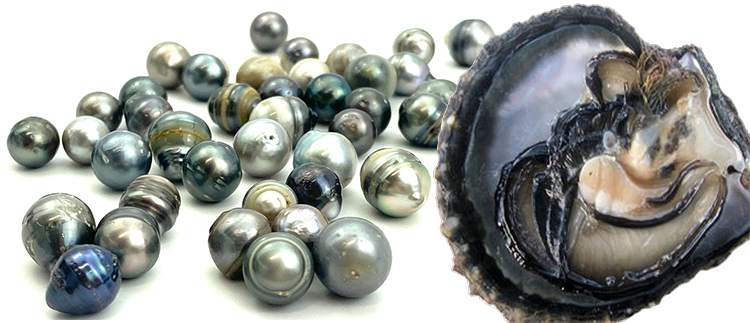
It's essential to pay attention to details like color, surface quality, luster, and provenance when determining whether or not a pearl is truly Tahitian. Furthermore, an authenticity certification can confirm this pearl. With these suggestions in mind, you can spot and buy genuine Tahitian pearls that will be a priceless addition to any jewelry collection.


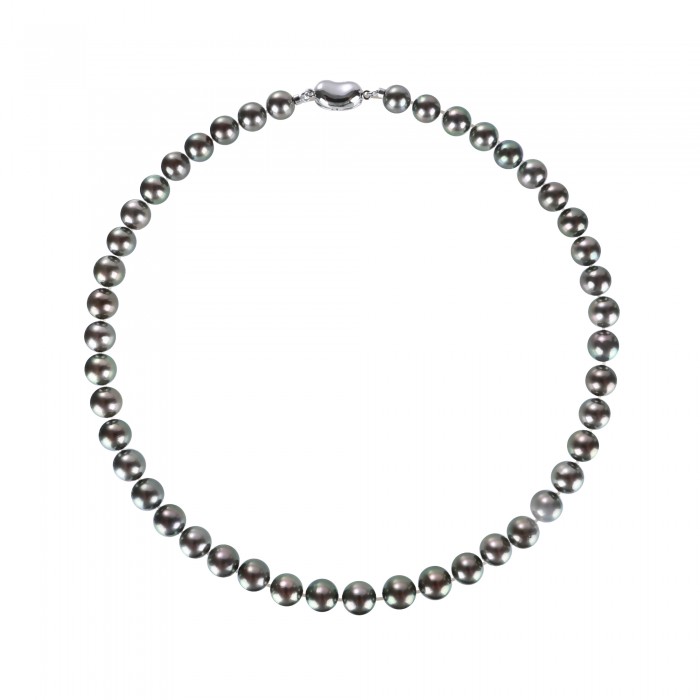
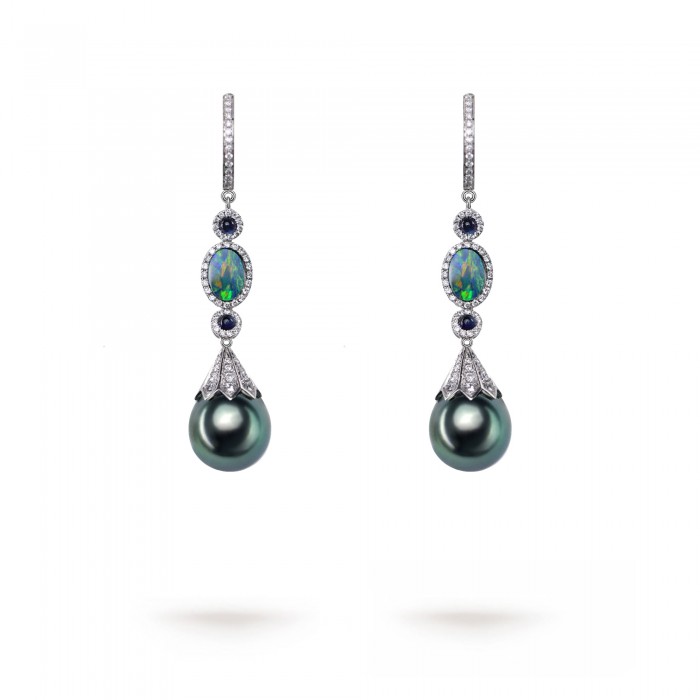
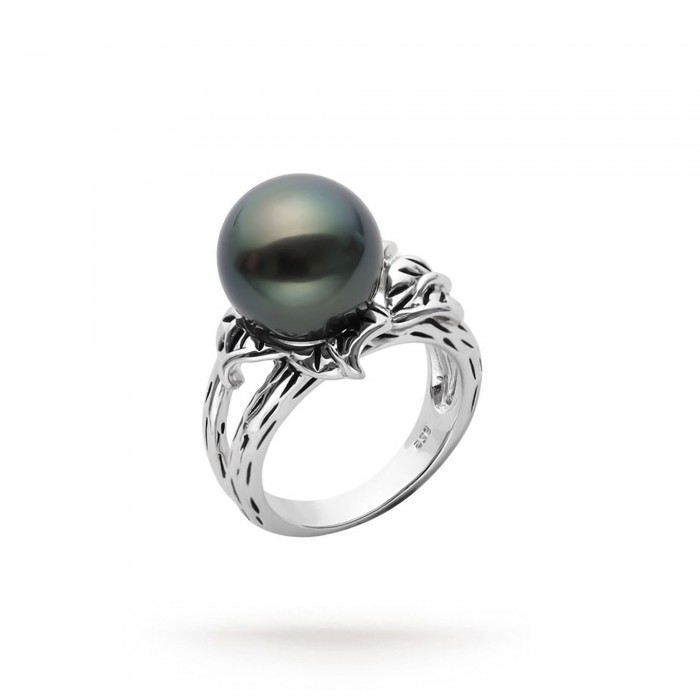
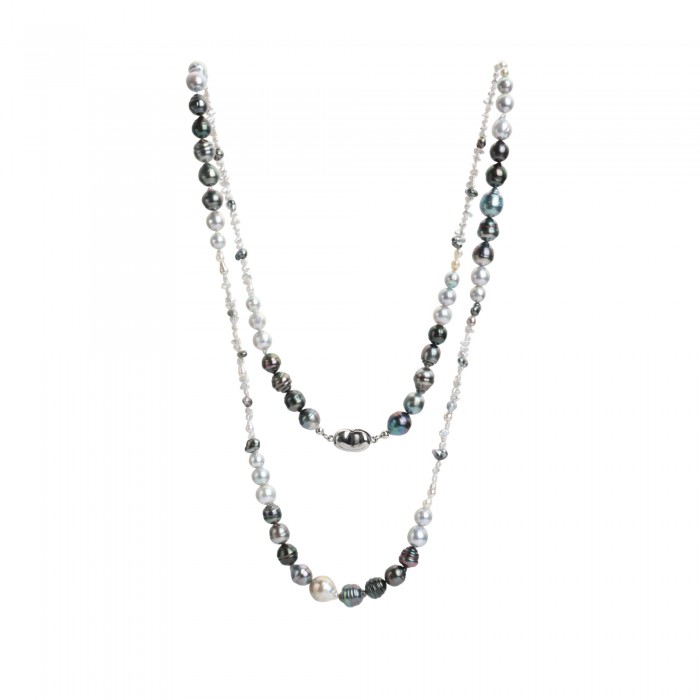
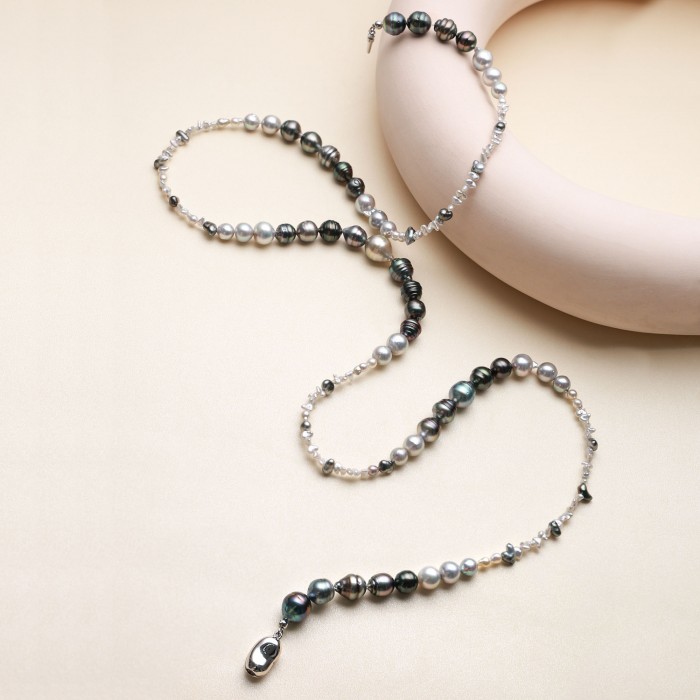
3 Comment(s)
Great blog content, learned easy-to-understand ways to identify pearls.
Can these methods be used to recognize the authenticity of other types of pearls? What's the difference?
I love black pearls and wish I had enough money to buy my wife a necklace of them.
Leave a Comment